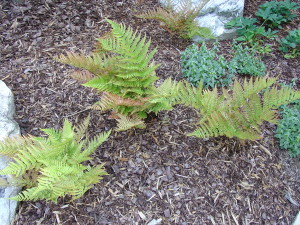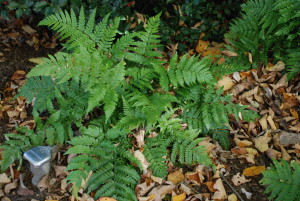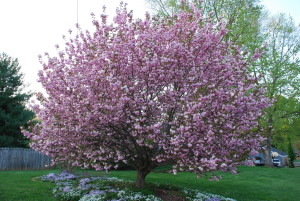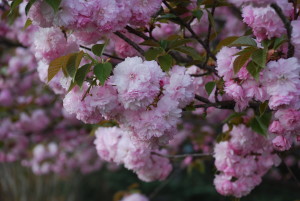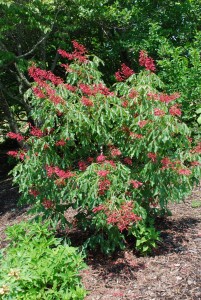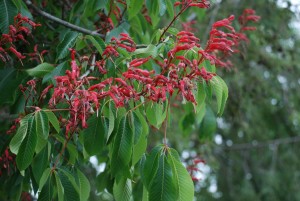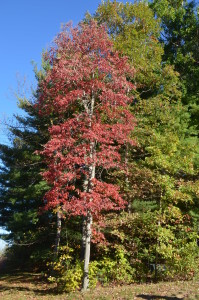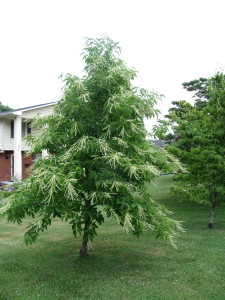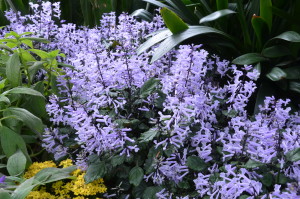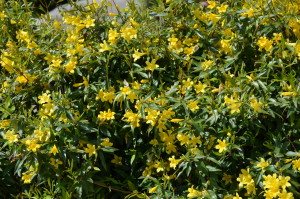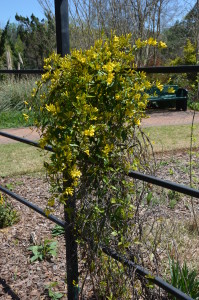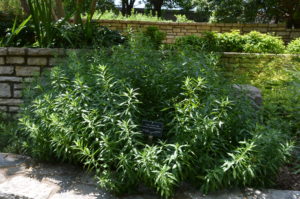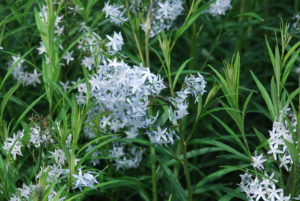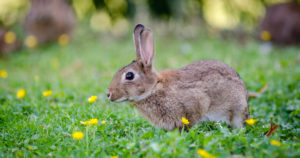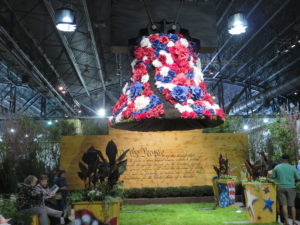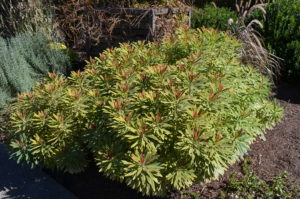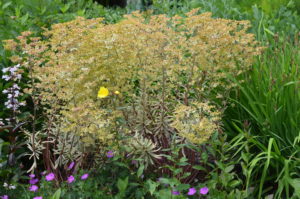Ferns are fine textured lacey-leaf groundcovers. Many kinds of ferns add a tropical accent to the shade garden. Autumn fern (Dryopteris erythrosora), aka Japanese wood fern, has evergreen or semi-evergreen arching foliage, depending how cold winter is (USDA hardiness zones 5 to 8).
Its common name is misleading. Best fronds color is in spring; fronds unfurl with a coppery-red tint and gradually fade to medium to dark green after 4-6 weeks. In late summer, bright-red spore clusters (sori) appear on the frond’s underside. In fall, fronds develop more of a russet tone.
Once established, autumn ferns grow happily beneath large shade trees or in dry soils. Initially, start them off with plenty of water, compost, and mulch to get root system established. They prefer an evenly moist soil, and mildly acidic soil pH between 5.5 and 7.0. Established plants are moderately drought tolerant.
In early spring emerging fiddleheads (fronds) unfurl to form a vase-shaped clump, 18-30 inches tall and wide depending on age. Clumps spread slowly by underground roots. At planting, space 16-18 inches apart for dense coverage. Indifferent to heat, humidity, and cold, this moderate shade lover excels in full morning sun in zone 5 and 6, but wants more shade in southerly climes.
From then on, autumn fern performs season after season with little additional care. It has no serious pest or disease problems and soil nutritional needs are minimal. Applying 2-3 inches of leaf mold is almost equivalent to feeding with slow release fertilizer.
The cultivar ‘Brilliance’ grows 2 feet high and wide and offers long seasonal impact. Its frond’s color is exceptional, that is, the upper surface has a deep coppery tint and high gloss, rich green color through most of the summer, and returns to a russet color in autumn.

